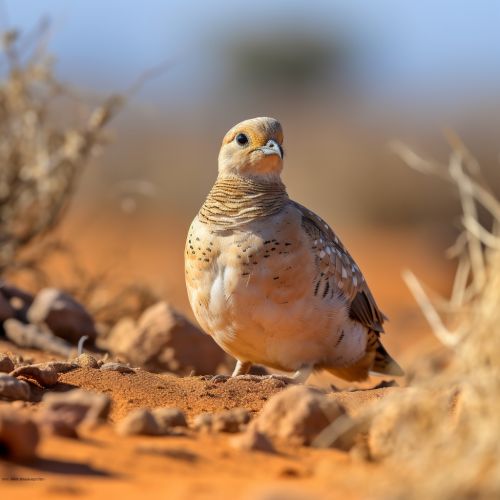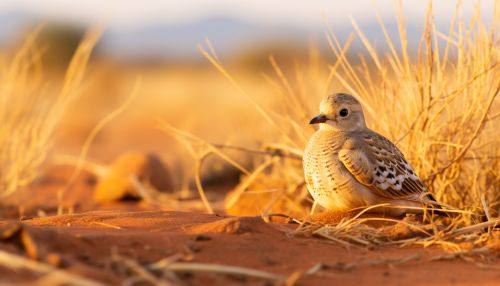Pteroclidae
Taxonomy and Etymology
The Pteroclidae, commonly known as sandgrouses, is a family of birds that belongs to the order Pterocliformes. The name Pteroclidae is derived from the Greek words 'pteron', meaning wing, and 'klados', meaning branch. This refers to the unique structure of the wings of these birds, which are adapted for long flights.
Description
Members of the Pteroclidae family are medium to large birds, with body lengths ranging from 24 to 40 cm. They have a compact body, a small head, and a short neck. Their legs are short and strong, with feathered tarsi and three forward-facing toes. The plumage of sandgrouses is typically cryptic, with colors ranging from sandy brown to gray, which helps them blend into their arid environments.
Distribution and Habitat
Sandgrouses are found in the arid regions of the Old World, including parts of North Africa, the Middle East, Central Asia, and the Indian subcontinent. They inhabit a variety of habitats, from desert plains to rocky hillsides, and are well adapted to survive in these harsh environments.
Behavior and Ecology
Sandgrouses are diurnal birds, most active during the early morning and late afternoon. They are highly social and often found in large flocks. They have a unique method of obtaining water, where males soak their belly feathers in water and carry it back to their chicks in the nest.
Reproduction
The breeding season of sandgrouses varies depending on the species and the region. They are monogamous, with both parents participating in nest building, incubation, and chick rearing. The nests are simple scrapes in the ground, often lined with plant material. The clutch size is usually two to three eggs, which are incubated for about 20 to 25 days.
Conservation Status
Many species of sandgrouses are threatened by habitat loss, hunting, and climate change. Conservation efforts are underway to protect these unique birds and their habitats.


